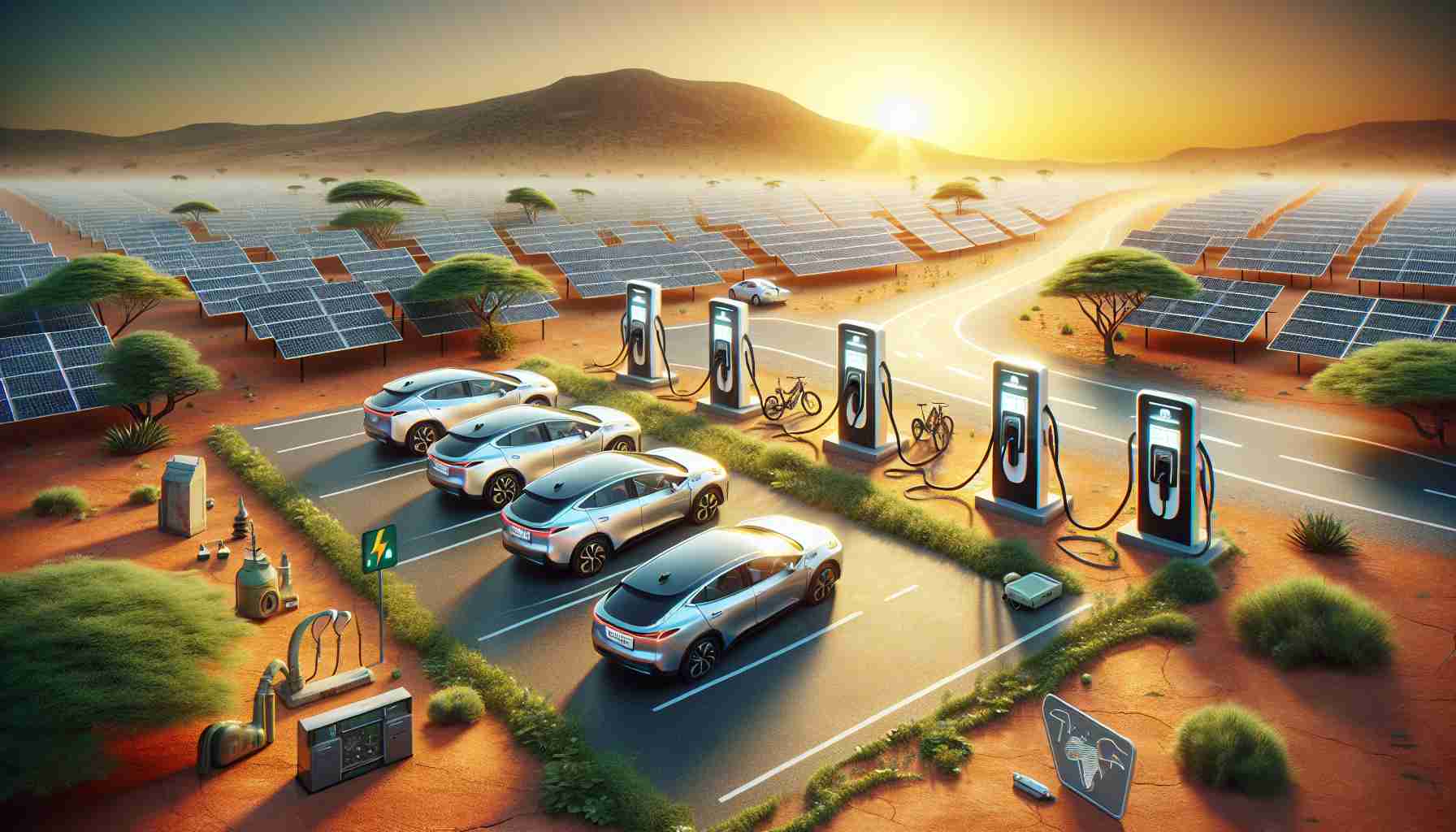Electric Vehicle Trend Accelerates Across Africa
The shift towards electric vehicles (EVs) in Africa is rapidly gaining momentum, supported by government policies, international investments, and partnerships with major automobile manufacturers. This shift promises to revolutionize mobility on the continent, enhancing air quality and reducing carbon emissions significantly.
South Africa Leading the Way
South Africa emerges as a frontrunner in electric vehicle adoption on the continent. By 2024, a minimum of eight new EV models is set to hit the South African market, featuring brands like Toyota, Mercedes, BMW, and Mitsubishi. Notably, Mahindra unveiled the Thar.e, an electric SUV scheduled for release in 2024. The country is also on track to produce its first EV by 2026, showcasing its commitment to green transportation.
Morocco’s Electric Vehicle Production Plans
Morocco, a key automotive exporter in Africa, is striving to ramp up local production capacity and provide more eco-friendly transportation options. Leading manufacturers such as Opel and Renault have announced their intentions to manufacture electric vehicles, signaling a shift towards sustainability.
East Africa’s Electric Revolution
Kenya and Rwanda are at the forefront of EV adoption in East Africa. Rwanda has implemented significant tax exemptions on electric vehicles and components, making mass adoption more feasible. Meanwhile, Kenya has slashed import tariffs for fully electric vehicles and initiated the transition to electric fleets in state-owned enterprises.
Innovative Electric Mobility Initiatives
In Kenya, Ampersand has partnered with BYD from China to produce around 40,000 electric motorcycles by 2026, a milestone for public and private electric mobility in the region. These initiatives represent a leap forward in sustainable transportation solutions.
Push Towards a Greener Future
Despite a promising outlook, challenges persist, notably the lack of adequate charging infrastructure. Investment in solar energy to power charging stations and data collection on private mass transportation systems are essential to attract further investments. Reliable data is pivotal in making infrastructure projects appealing to financial institutions and development banks.
Shaping Africa’s Transport Landscape
Africa’s growing middle class and rapid urban migration underscore the importance of addressing transportation demands sustainably. By investing in EVs and charging infrastructure, the continent can mitigate emissions and provide cleaner, more affordable transportation for its urban population.
Electric vehicle adoption in Africa is on an upward trajectory, driven by favorable policies, strategic investments, and collaboration with major automobile manufacturers. With ongoing infrastructural developments and supportive policies, Africa is poised to undergo a notable transformation in its transportation sector, paving the way towards a cleaner and more sustainable future.
Expanding Horizons: Electric Vehicles in Africa
As electric vehicle adoption gains traction across Africa, new developments continue to shape the continent’s journey towards sustainable transportation. While progress is evident, certain key questions and challenges arise, shedding light on the complexities of this transition:
Key Questions:
1. How are African countries tackling the issue of charging infrastructure for electric vehicles?
2. What role do renewable energy sources play in supporting the growth of electric vehicles in Africa?
3. Are local manufacturing initiatives driving the adoption of electric vehicles in the region?
Addressing Challenges and Controversies:
One of the primary challenges in the electric vehicle sector in Africa is the lack of comprehensive charging infrastructure. Without a widespread network of charging stations, the feasibility and convenience of owning an electric vehicle are compromised. This issue underscores the urgent need for substantial investments in building charging infrastructure across urban centers and major highways.
Similarly, the integration of renewable energy sources, such as solar power, is crucial for ensuring the sustainability of electric vehicles in Africa. By harnessing clean energy for charging, countries can reduce their reliance on fossil fuels and further diminish carbon emissions, aligning with the overarching goal of environmental preservation.
Another point of contention lies in local manufacturing capabilities for electric vehicles. While some countries like South Africa are making strides in this area, others may face challenges in developing a robust manufacturing ecosystem. Balancing the benefits of local production with the need for technological expertise and global partnerships remains a critical consideration for advancing the electric vehicle industry in Africa.
Advantages and Disadvantages:
Advantages:
– Electric vehicles contribute significantly to reducing air pollution and greenhouse gas emissions, improving overall air quality in urban areas.
– Lower operational costs and maintenance requirements make electric vehicles a cost-effective and sustainable transportation solution in the long run.
Disadvantages:
– Initial high purchase costs of electric vehicles may deter widespread adoption, particularly in low-income segments of the population.
– Limited range and charging infrastructure constraints can pose challenges for long-distance travel and widespread adoption of electric vehicles in rural areas.
Related Links:
African Development Bank
UN Universal Declaration of Human Rights
Continuing on the path towards a greener future, Africa navigates the complexities of electric vehicle adoption, striving to overcome barriers while leveraging opportunities for sustainable growth. As the continent reshapes its transport landscape, the evolution towards a cleaner and more environmentally conscious future unfolds, guided by innovation, collaboration, and a commitment to sustainable development.
